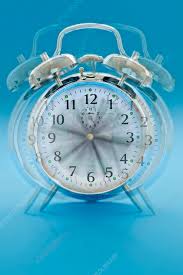Bedwetting (nocturnal enuresis) is a common problem among kids, yet one that is rarely discussed.
Often, children are so embarrassed about it that they don’t even want to discuss it with their primary care clinicians. Families feel frustrated when they try different techniques that promise to help, but don’t. By the time they come to me, parents sometimes feel like their child will never have a dry night again.
But when I think about this challenge, I prefer to say that they are not dry at night … yet!
In fact, when I speak about this issue with patients and their families, I never use the “W word” (wetting) because I believe it has a negative connotation.
Part of the bad rap bedwetting has received is due to the diagnostic criteria the regulatory committees on the subject have prescribed: They say anyone older than 5 who isn’t dry at night has a disorder.
But I strongly disagree for a few reasons:
1. Fifteen percent of 5-year-olds and 10% of 6-year-olds are still not dry at night. This is a pretty high percentage of kids to label as “abnormal.”
2. Most pediatricians I know in the United States—including myself—don’t consider this to be a problem until children are around 8 years old. This is because it typically doesn’t bother them until this age. It may bother their parents, but we are not treating them. Instead, my job is to educate parents to be more realistic and patient about the issue.
3. Trying to treat children younger than 8 is often an exercise in futility because they are not motivated.
4. Labeling a child with a “disorder” gives them the message that they are not good enough, which further increases their shame around the issue.
Why kids don’t have dry nights
The most common reason patients are not yet dry at night is constipation.1,2 This is a simple matter of biology in which an overfilled rectum presses on the bladder and makes it more likely to have an accident.
Because of this, I now routinely recommend that all of my patients get a single x-ray to rule out constipation. If we determine that is the culprit, we can prescribe a protocol to clean out the blockage and maintain healthy functioning.
Another thing I often recommend is that a child urinate in a sterile cup right after they wake up. The sample can be taken to your primary care clinician’s office to rule out other medical problems that can cause nocturnal enuresis, including sugar diabetes, diabetes insipidus (rarely the case), and a urinary tract infection.
Daytime urinary accidents
If children have frequent daytime accidents, they should be evaluated by a urologist or urology nurse practitioner who has experience with this problem.
Treatment options
Traditional treatment options include the two most common approaches: an alarm and medication.
The alarm can take as long as 6 weeks to work, after which it is unlikely to help at all if symptoms haven’t resolved. Even when they are successful, alarms only help around two-thirds of kids, half of whom usually start having accidents again when they stop using the alarm.
Medication offers 1 to 2 more dry nights per week than a placebo does, but when children stop taking the medication, almost 100% relapse.
And neither of these treatments teach the brain and bladder how to communicate with each other during the night (aka, continence skills).
The third, less-well-known treatment option is called medical hypnosis.
What is medical hypnosis?
Also known as clinical hypnosis, self-hypnosis, visualization, guided imagery, mental imagery, and daydreaming with a focus, medical hypnosis refers to a highly focused state of mind.
Have you ever been “in the zone” playing your sport? Or been completely absorbed in a good book? Has your child ever been so focused on playing a video game that when you called him, he didn’t hear you? These are all examples of being extremely focused on something.
Medical hypnosis works by having patients choose a specific therapeutic goal (like being dry at night). Then, we help them create an empowering experience in their minds that allows them to accomplish that goal. It is a skill we work on together, and, like any other skill, the more they practice, the better they get and the easier it becomes. They will also be able to elicit the positive effects more quickly over time.
According to medical studies, when patients learn self-hypnosis, 75% improve—usually after only 1 to 3 visits—and the results are long-lasting. The failures mostly happen when children are not motivated, or when the parents are too involved.³
Helping patients become dry at night using medical hypnosis is very gratifying for me because we usually see significant improvement so quickly. And, more often than not, patients become more self-confident and develop a stronger sense of self-esteem.
For patients who cannot access my services in person, I have developed Keeping the Bed Dry®, a comprehensive home video program. It incorporates the same medical hypnosis I use in my office to produce great success at home.
To order your copy today, visit KeepingtheBedDry.com today!
Sources
1. Hodges, S.J. & Anthony, E.Y. (2012). Occult Megarectum: A commonly unrecognized cause of enuresis. Urology, 79(2), 421–424.
2. McGrath, K.H., Caldwell, P.H., & Jones, M.P. (2008). The frequency of constipation in children with nocturnal enuresis: A comparison with parental reporting. Journal of Paediatrics and Child Health, 44(1-2),19–27.
3. Kohen, D.P., Olness, K.N., Colwell, S.O., & Heimel, A. (1984). The use of relaxation-mental imagery (self-hypnosis) in the management of 505 pediatric behavioral encounters. Journal of Developmental Behavior Pediatrics, 5(1), 21–25.








